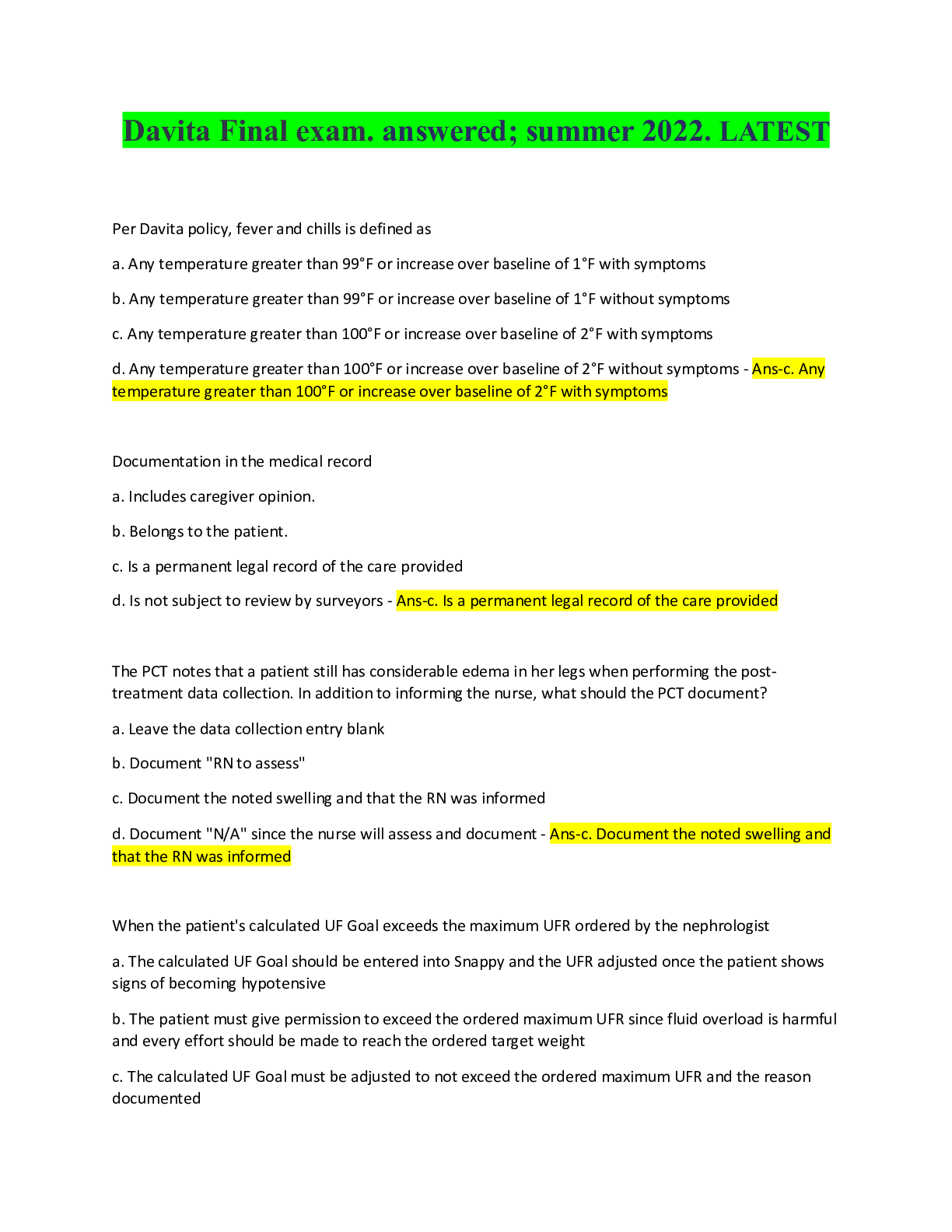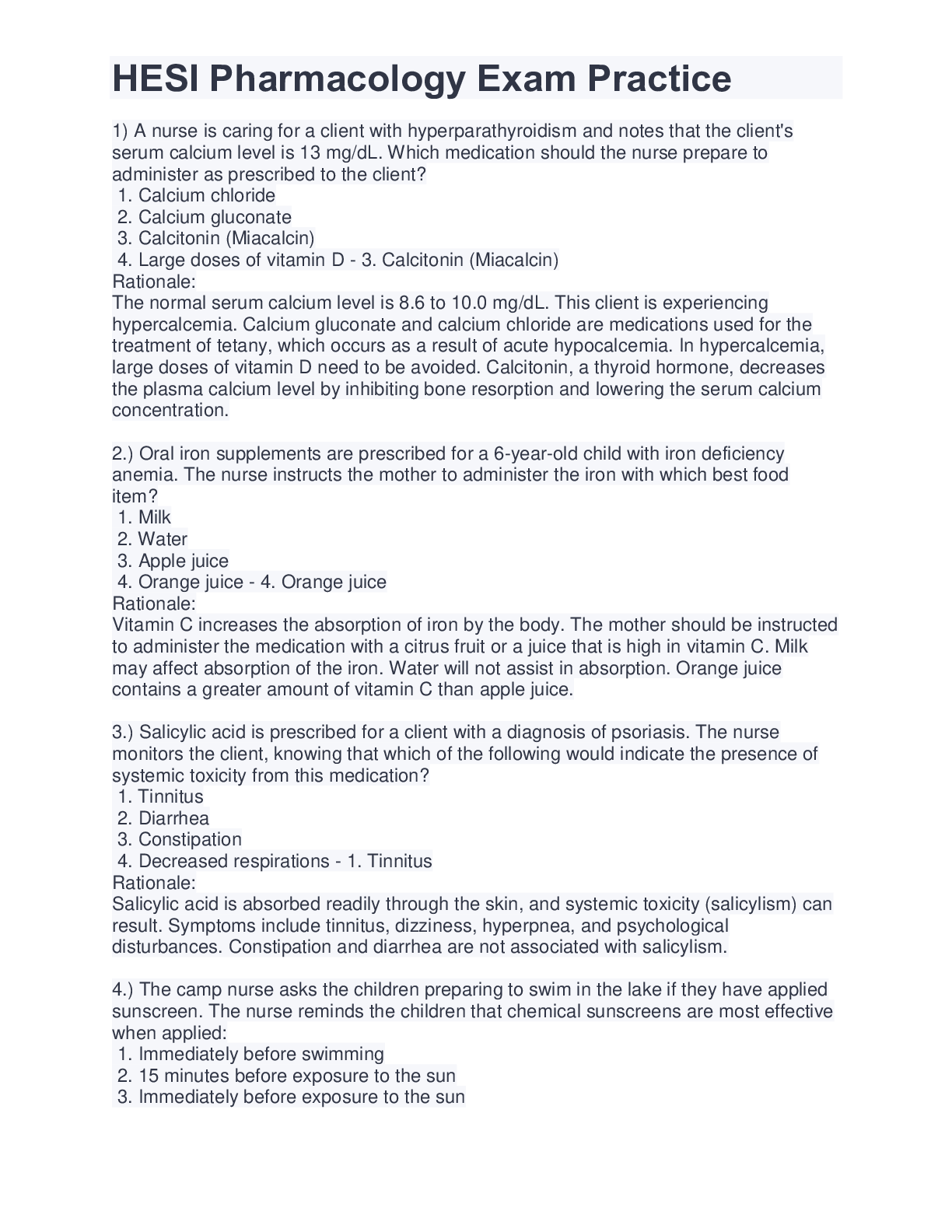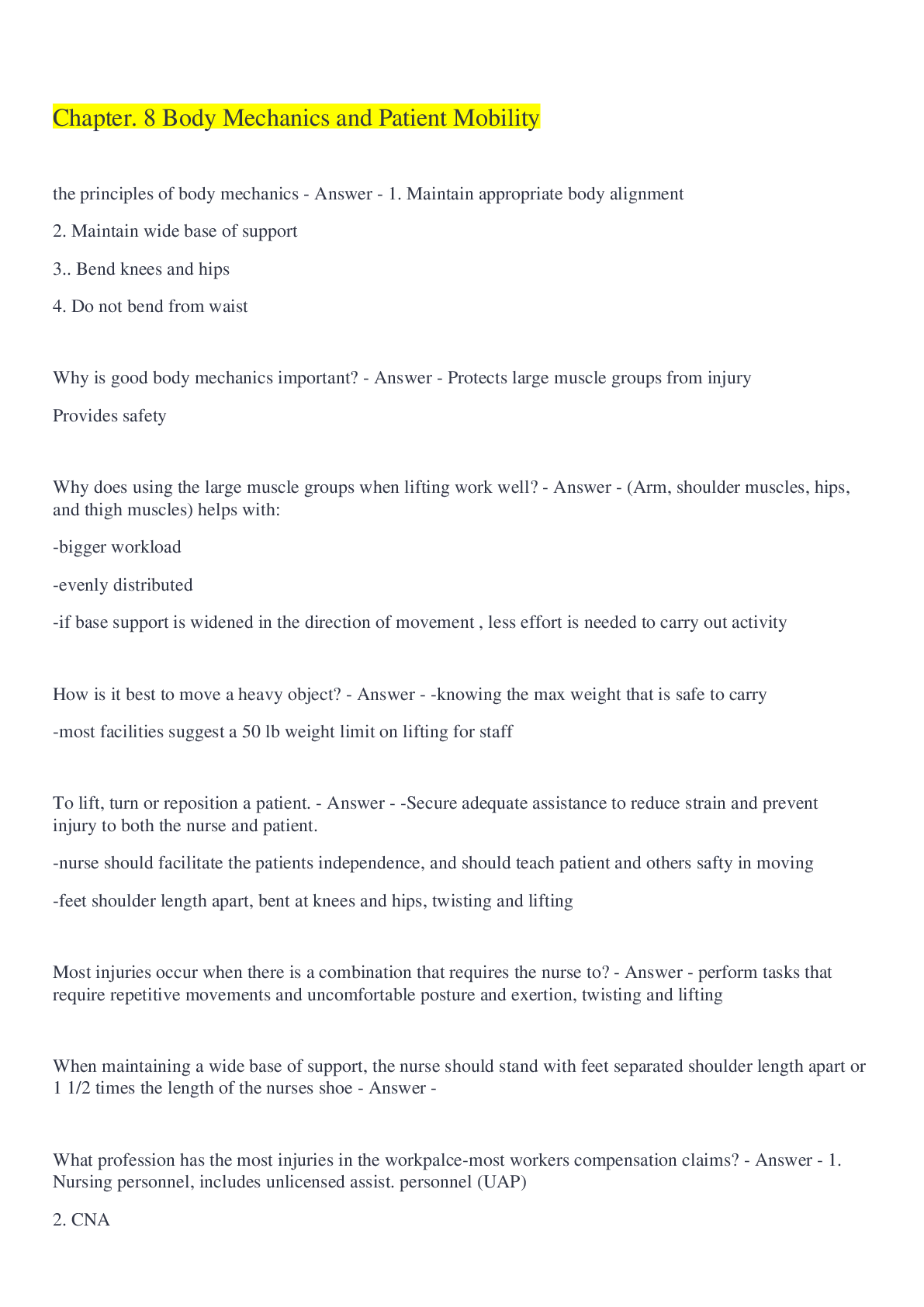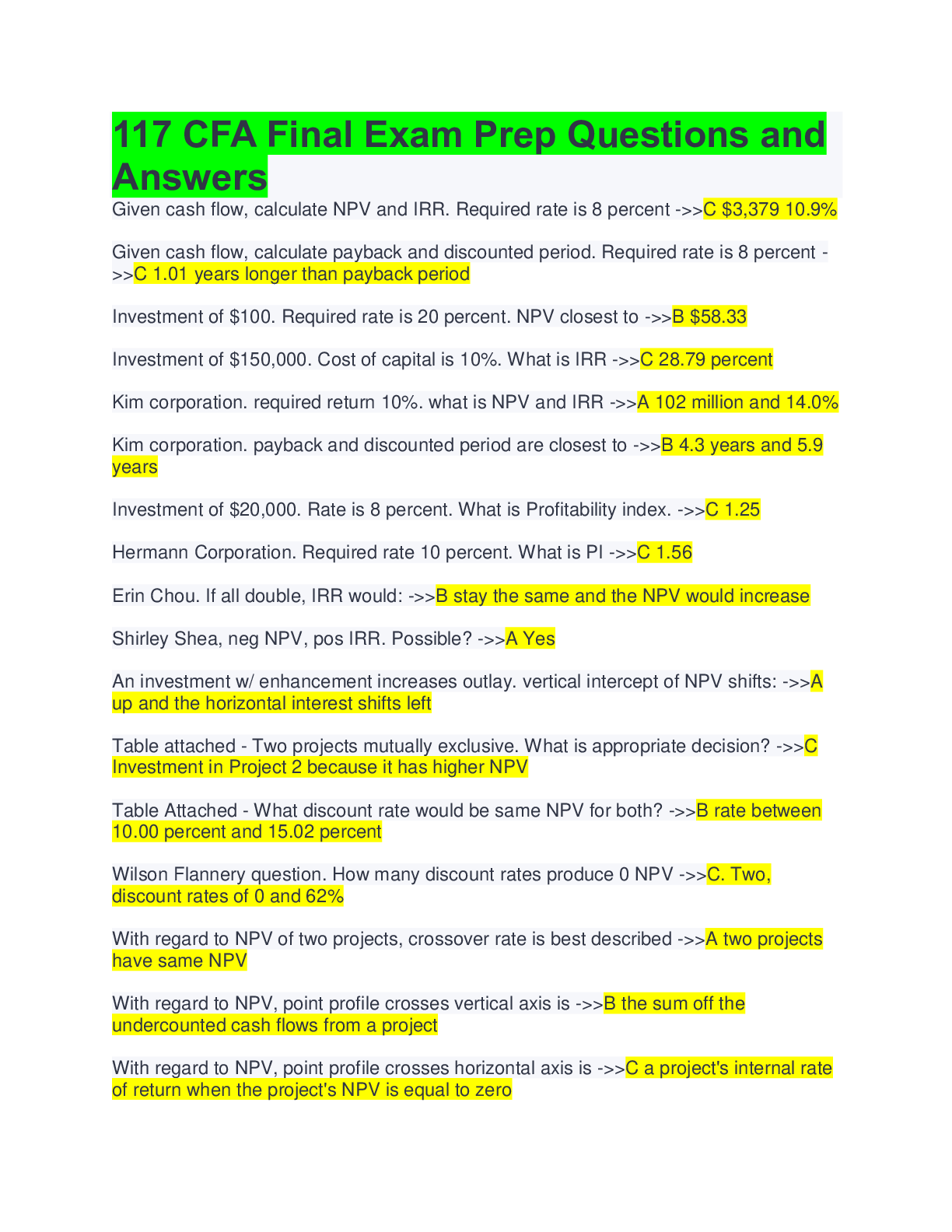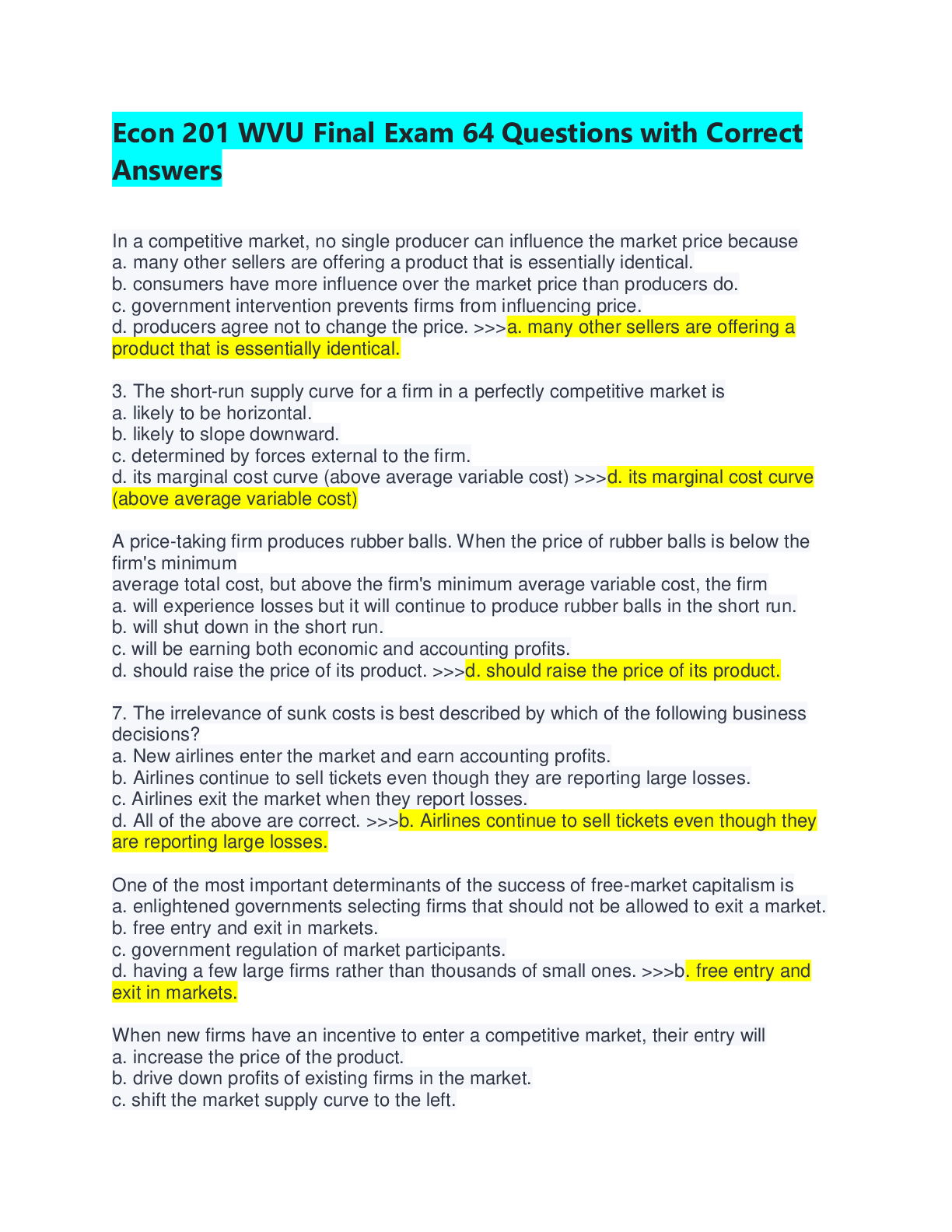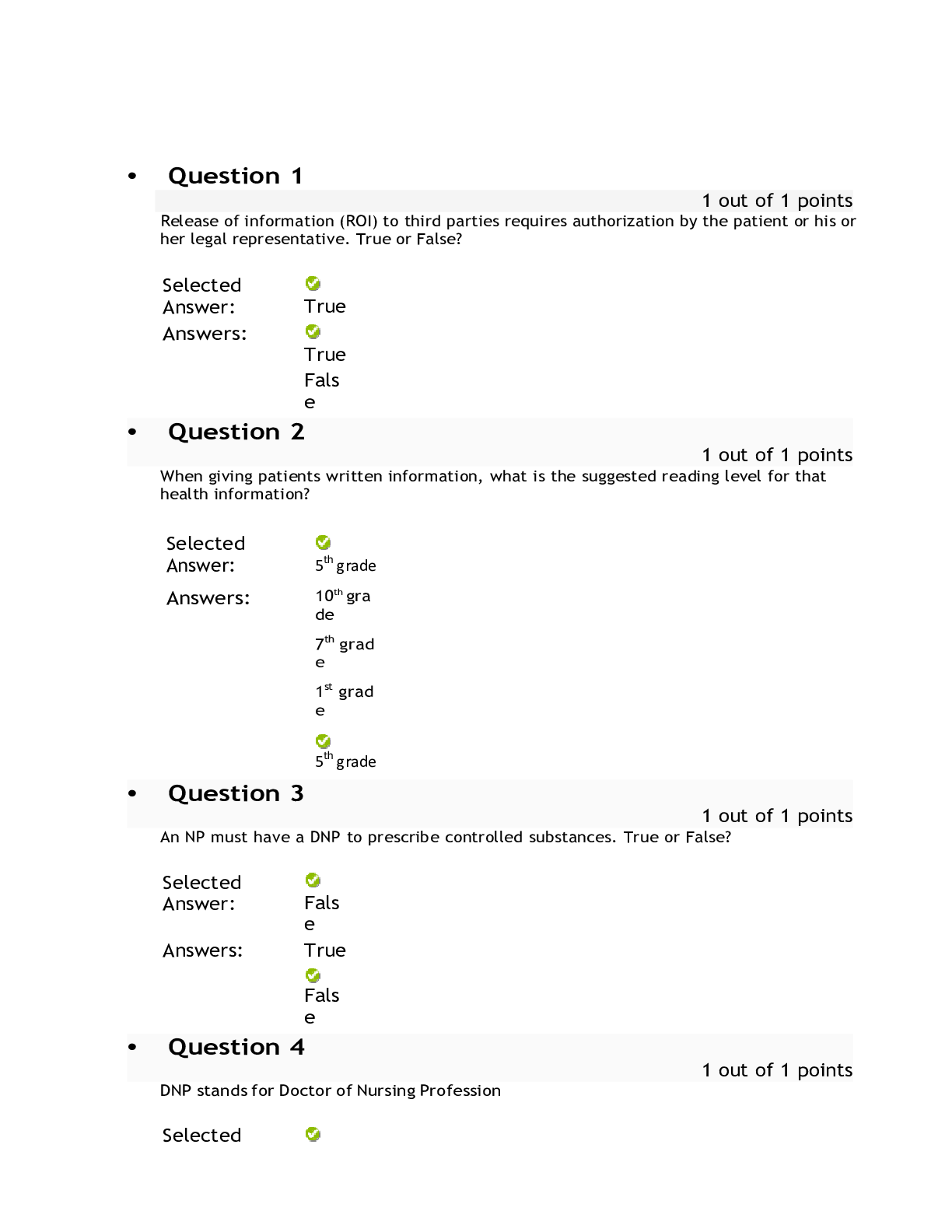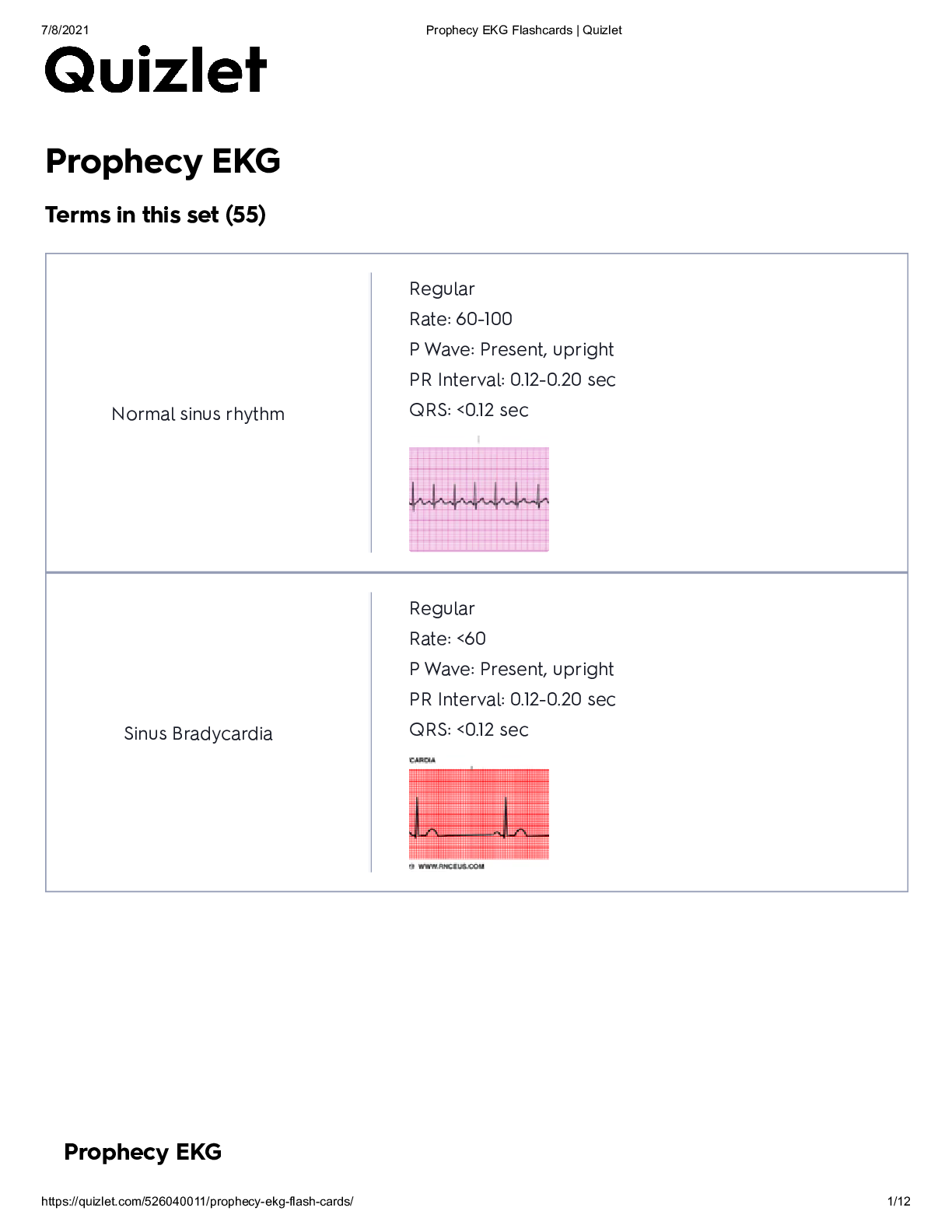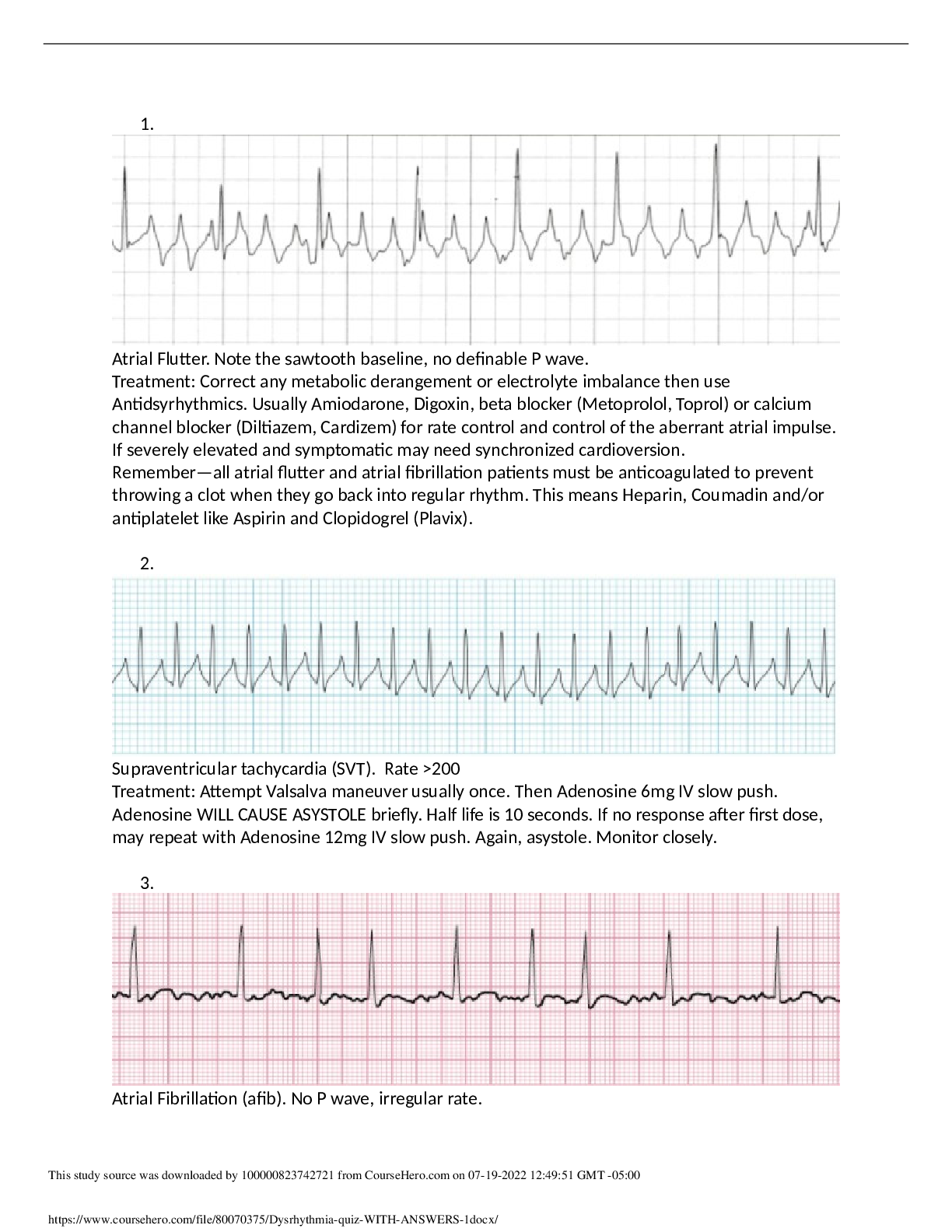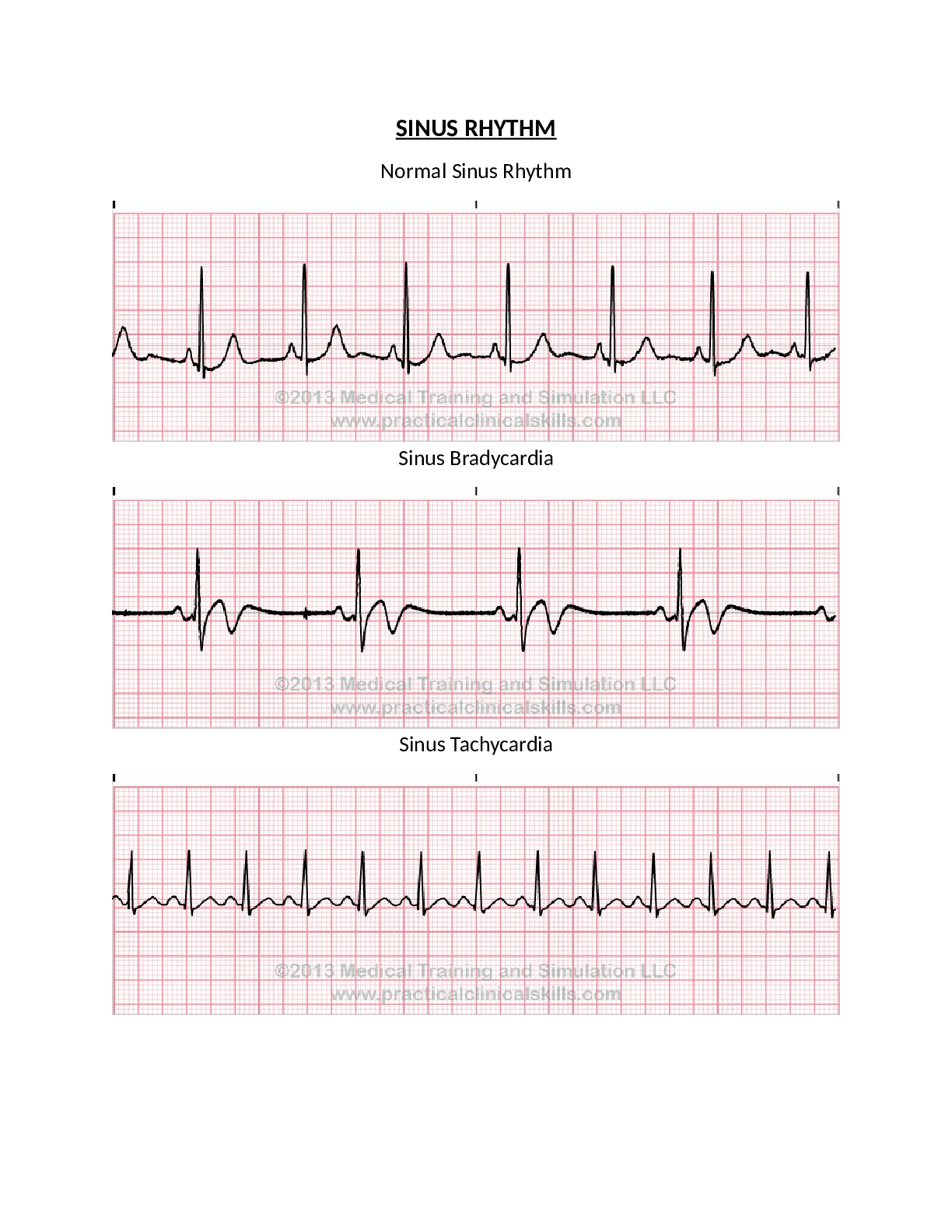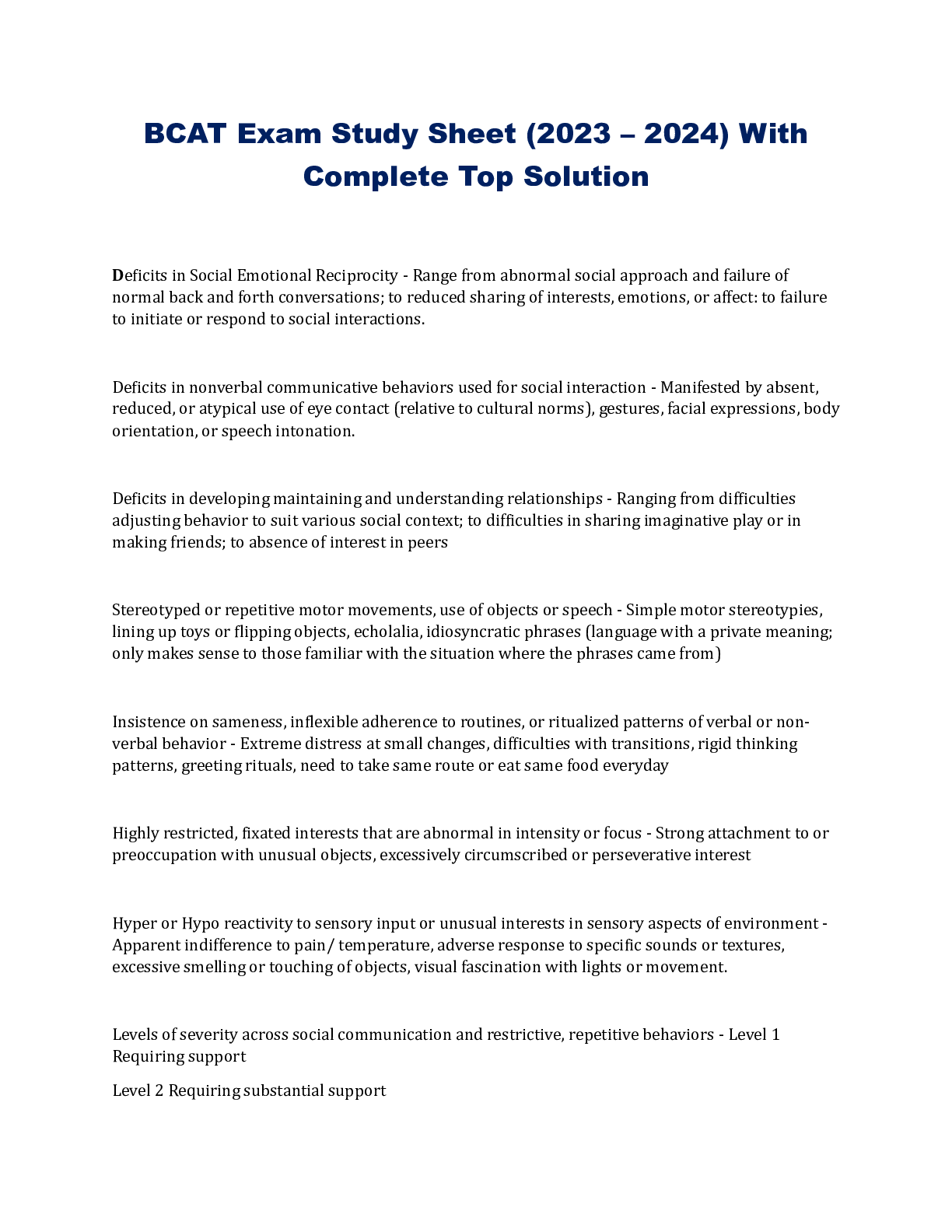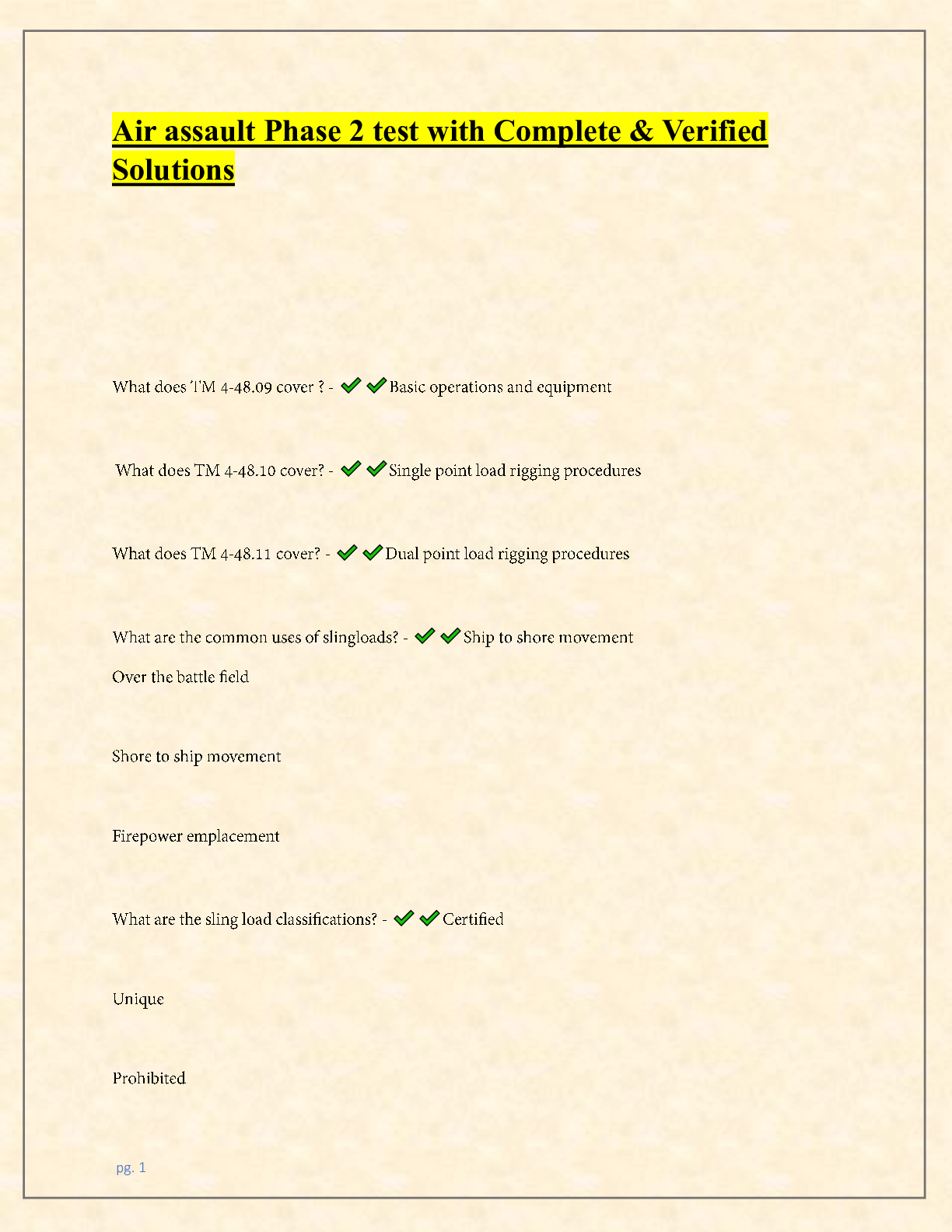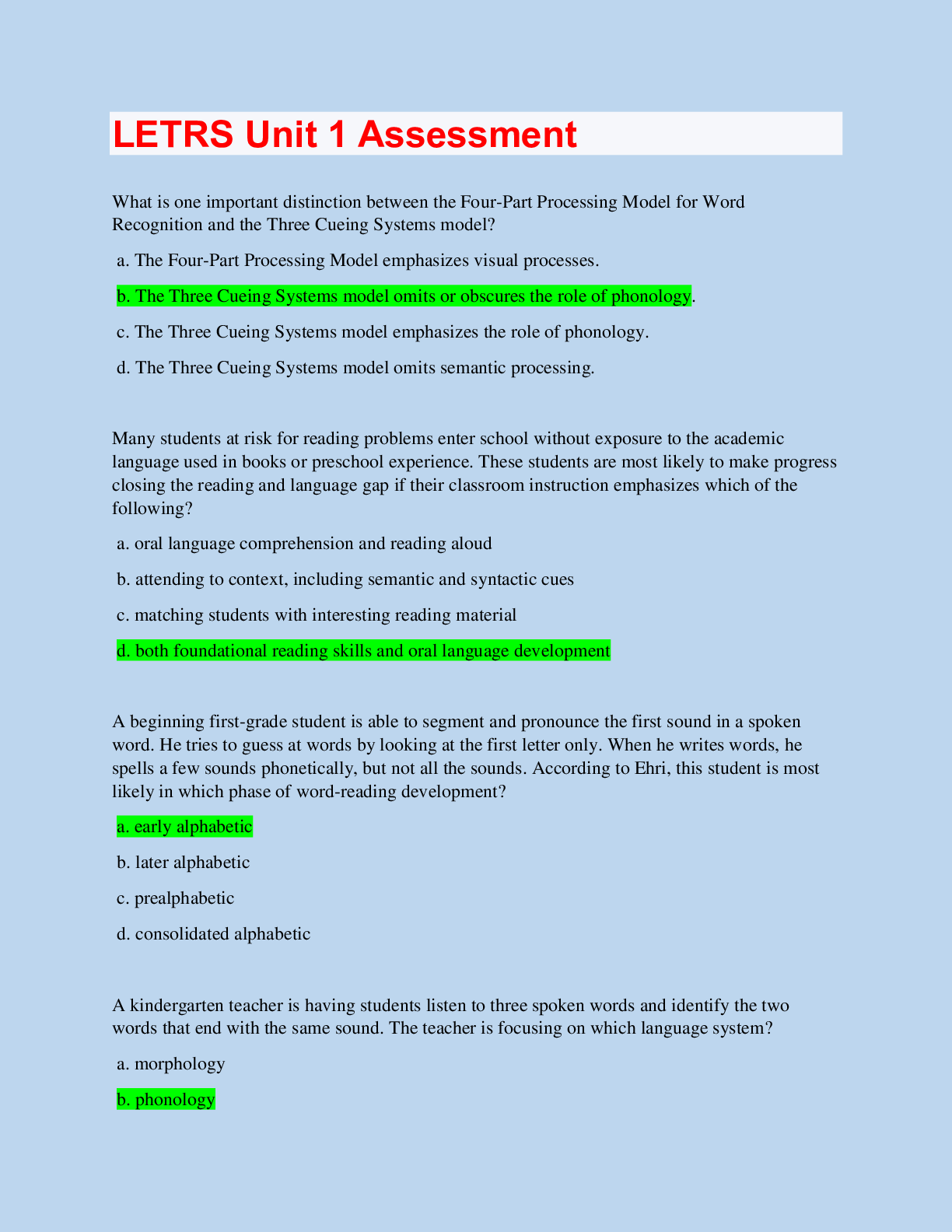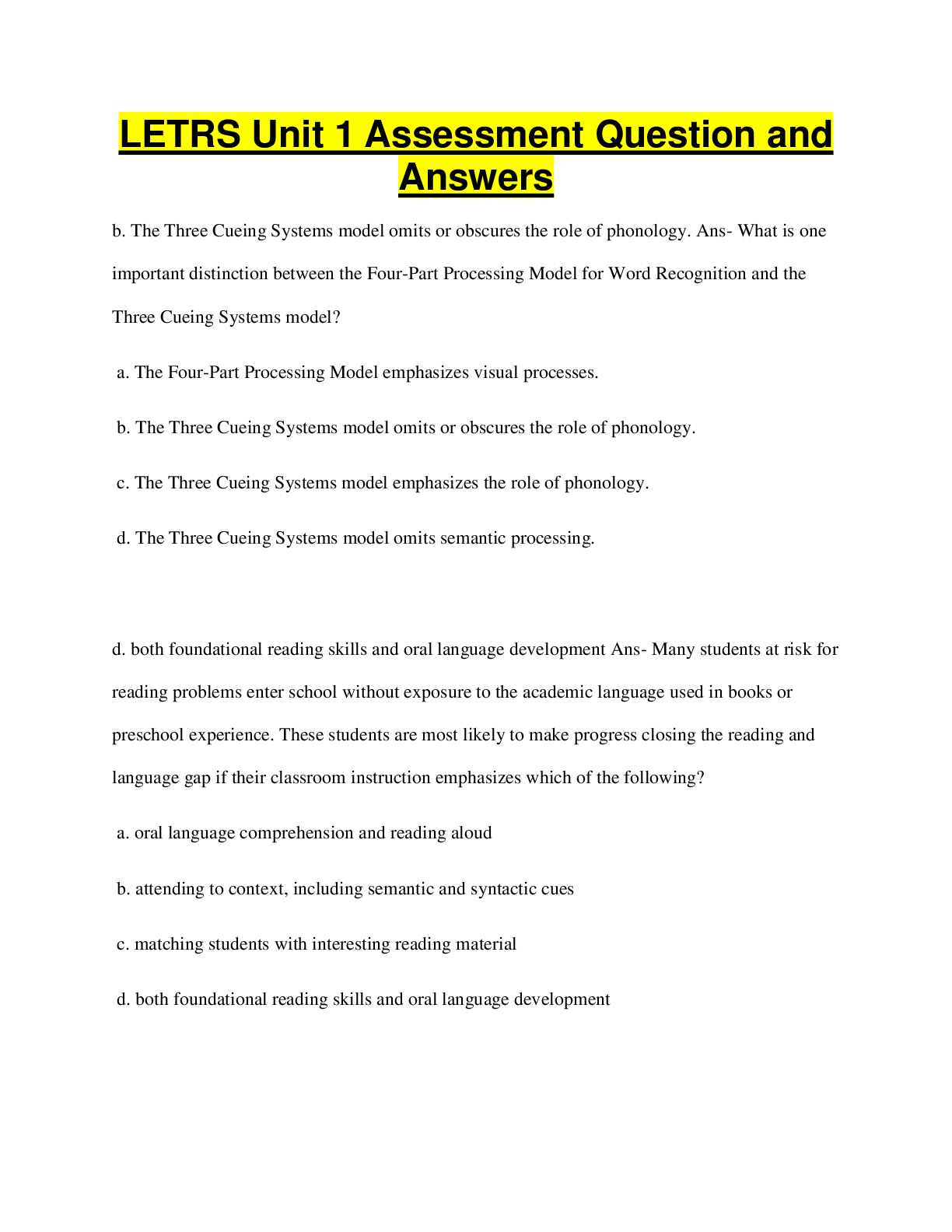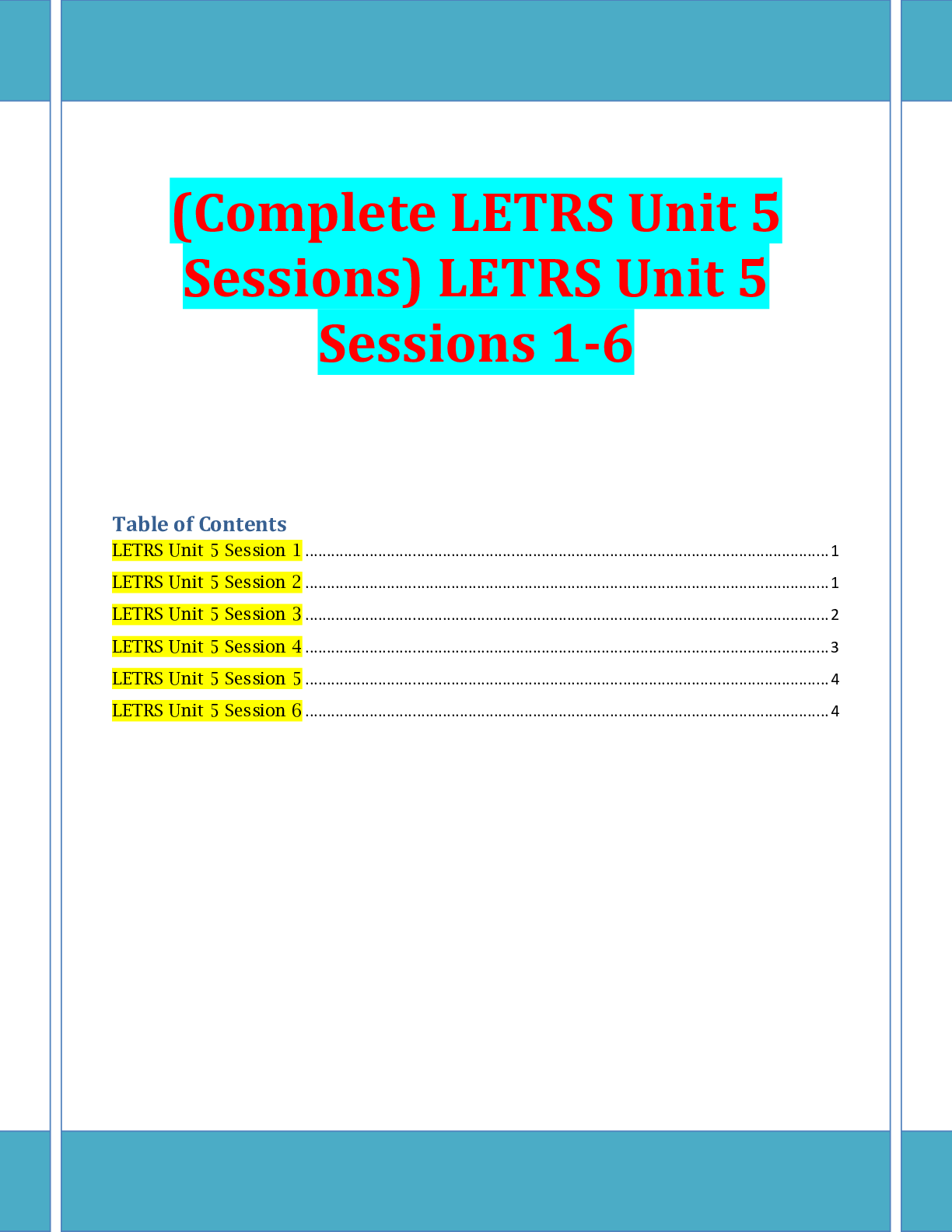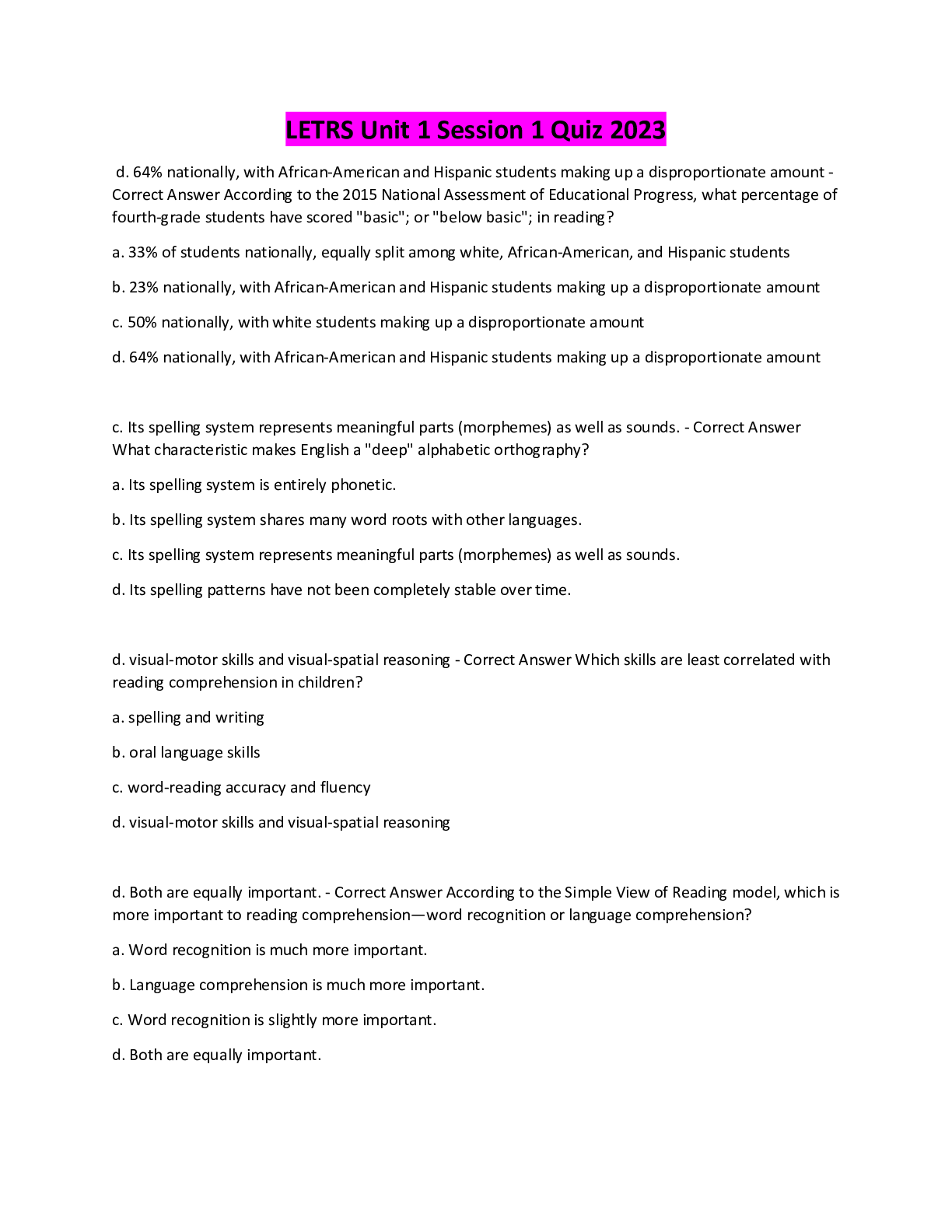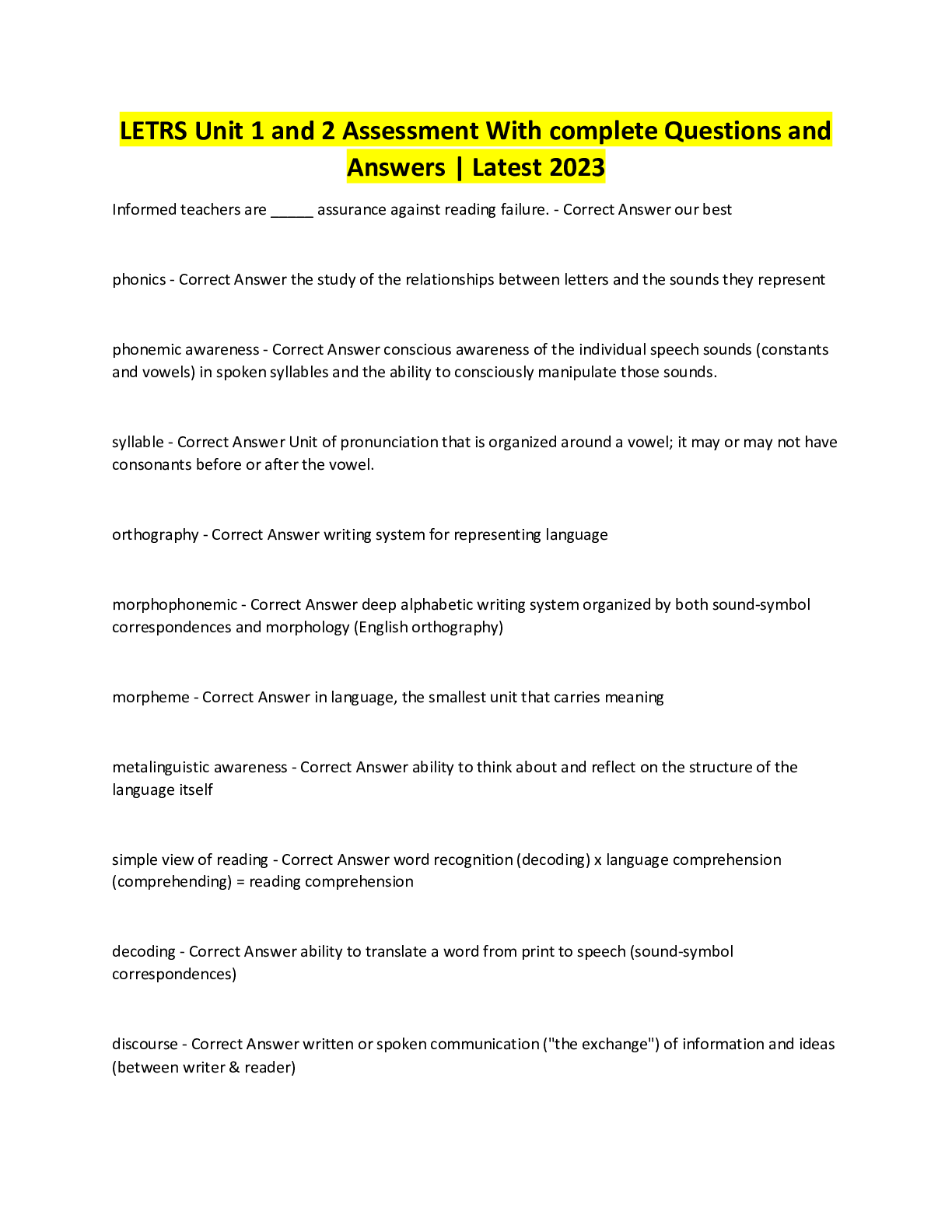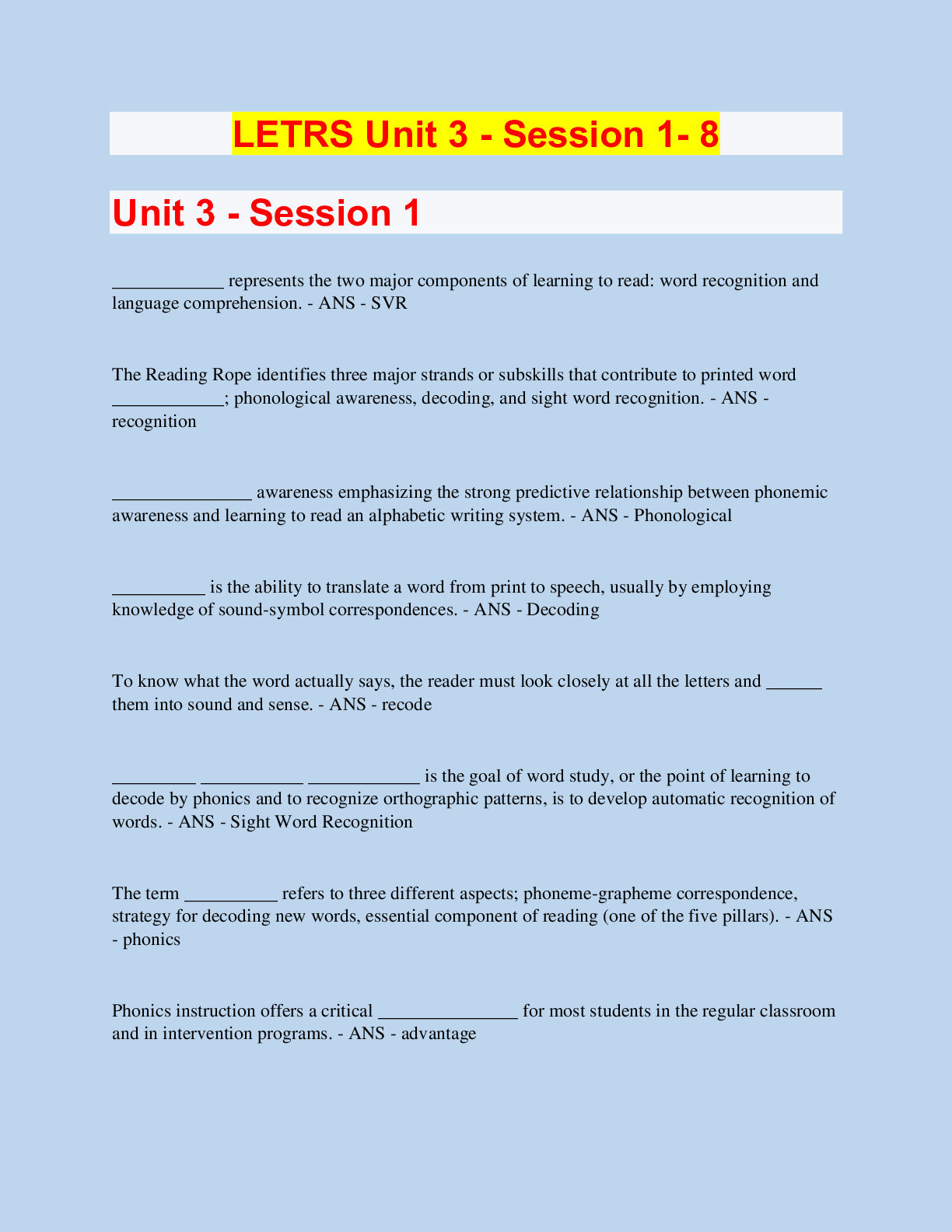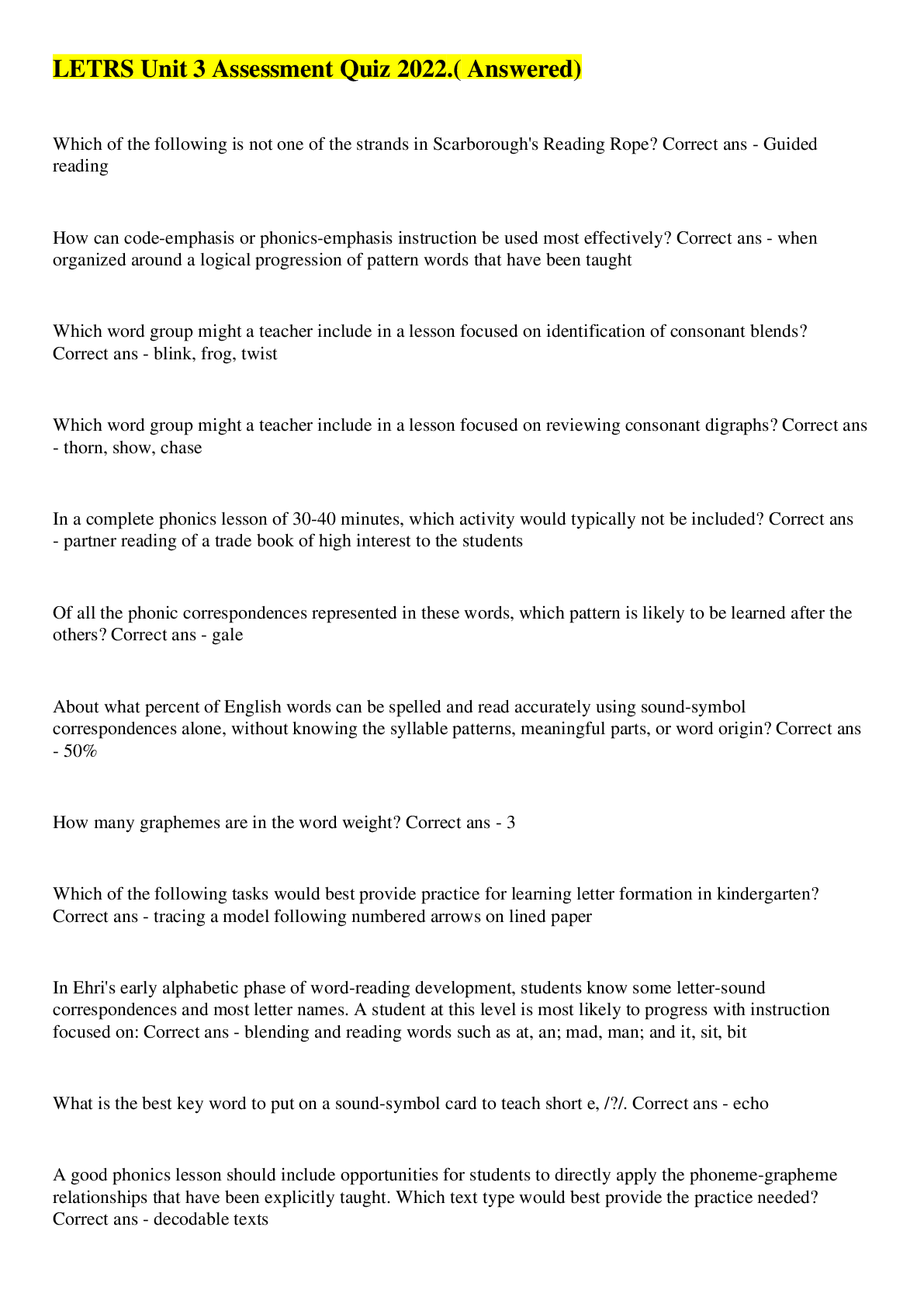*NURSING > EXAM > Board Certified Autism Technician, BCAT EXAM STUDY SHEET UPDATED 2022 A+ Guide. 113 Questions And An (All)
Board Certified Autism Technician, BCAT EXAM STUDY SHEET UPDATED 2022 A+ Guide. 113 Questions And Answers
Document Content and Description Below
Board Certified Autism Technician, BCAT EXAM STUDY SHEET UPDATED 2022 A+ Guide. 113 Questions And Answers 1. Deficits in Social Emotional Reciprocity - CORRECT Ans- Ans-Range from abnormal social ... approach and failure of normal back and forth conversations; to reduced sharing of interests, emotions, or affect: to failure to initiate or respond to social interactions. 2. Deficits in nonverbal communicative behaviors used for social interaction - CORRECT Ans- AnsManifested by absent, reduced, or atypical use of eye contact (relative to cultural norms), gestures, facial expressions, body orientation, or speech intonation. 3. Deficits in developing maintaining and understanding relationships - CORRECT Ans- Ans-Ranging from difficulties adjusting behavior to suit various social context; to difficulties in sharing imaginative play or in making friends; to absence of interest in peers 4. Stereotyped or repetitive motor movements, use of objects or speech - CORRECT Ans- AnsSimple motor stereotypies, lining up toys or flipping objects, echolalia, idiosyncratic phrases (language with a private meaning; only makes sense to those familiar with the situation where the phrases came from) 5. Insistence on sameness, inflexible adherence to routines, or ritualized patterns of verbal or nonverbal behavior - CORRECT Ans- Ans-Extreme distress at small changes, difficulties with transitions, rigid thinking patterns, greeting rituals, need to take same route or eat same food everyday 6. Highly restricted, fixated interests that are abnormal in intensity or focus - CORRECT Ans- AnsStrong attachment to or preoccupation with unusual objects, excessively circumscribed or perseverative interest 7. Hyper or Hypo reactivity to sensory input or unusual interests in sensory aspects of environment - CORRECT Ans- Ans-Apparent indifference to pain/ temperature, adverse response to specific sounds or textures, excessive smelling or touching of objects, visual fascination with lights or movement.8. Levels of severity across social communication and restrictive, repetitive behaviors - CORRECT Ans- Ans-Level 1 Requiring support 9. Level 2 Requiring substantial support 10. Level 3 Requiring very substantial support 11. Postive Reinforcement - CORRECT Ans- Ans-Sally took off her shoe independently yesterday, her mother clapped her hands and said, "Way to go Sally!" Sally took her shoes off independently again today. The clapping and "way to go" were the postive reinforcer. 12. Negative Reinforcement - CORRECT Ans- Ans-When you start your car, an annoying noise is sounded. The noise turns off when you put your seatbelt on. The next time you get in the car you put your seatbelt on before you start the car, so you do not hear the noise. 13. Postive Punishment - CORRECT Ans- Ans-Jose hit Lisa because he wanted her to play with him. The teacher reprimands Jose and told him not to hit her again. Jose then asked Lisa to play with him the next day. 14. Research regarding treatment intensity - CORRECT Ans- Ans-Comprehensive undertaking that involves the child's entire family and a team of professionals. One-on-one treatment 30-40 hours per week 15. Early intensive behavioral intervention research - CORRECT Ans- Ans-ABA (Applied Behavior Analysis) Early intensive intervention helps all ages, but those who start before age 2 were most likely to make dramatic gains. 16. Foundational Autism Research - CORRECT Ans- Ans-IAN (Interactive Autism Network) a project collecting information online from families of children with autism, ABA which may help build the foundation for later social skills training 17. Difference between evidence-based interventions vs. non-evidence based interventions - CORRECT Ans- Ans--Evidence-based: a body of formal research indicates the effectiveness of the treatment. (occupational therapy, speech therapy, ABA, social skills therapy) -Non-evidence based: has not been proven effective ( Hippo therapy (horse-back riding), GFCF diet (Gluten free, Casein free) [Show More]
Last updated: 1 year ago
Preview 1 out of 13 pages
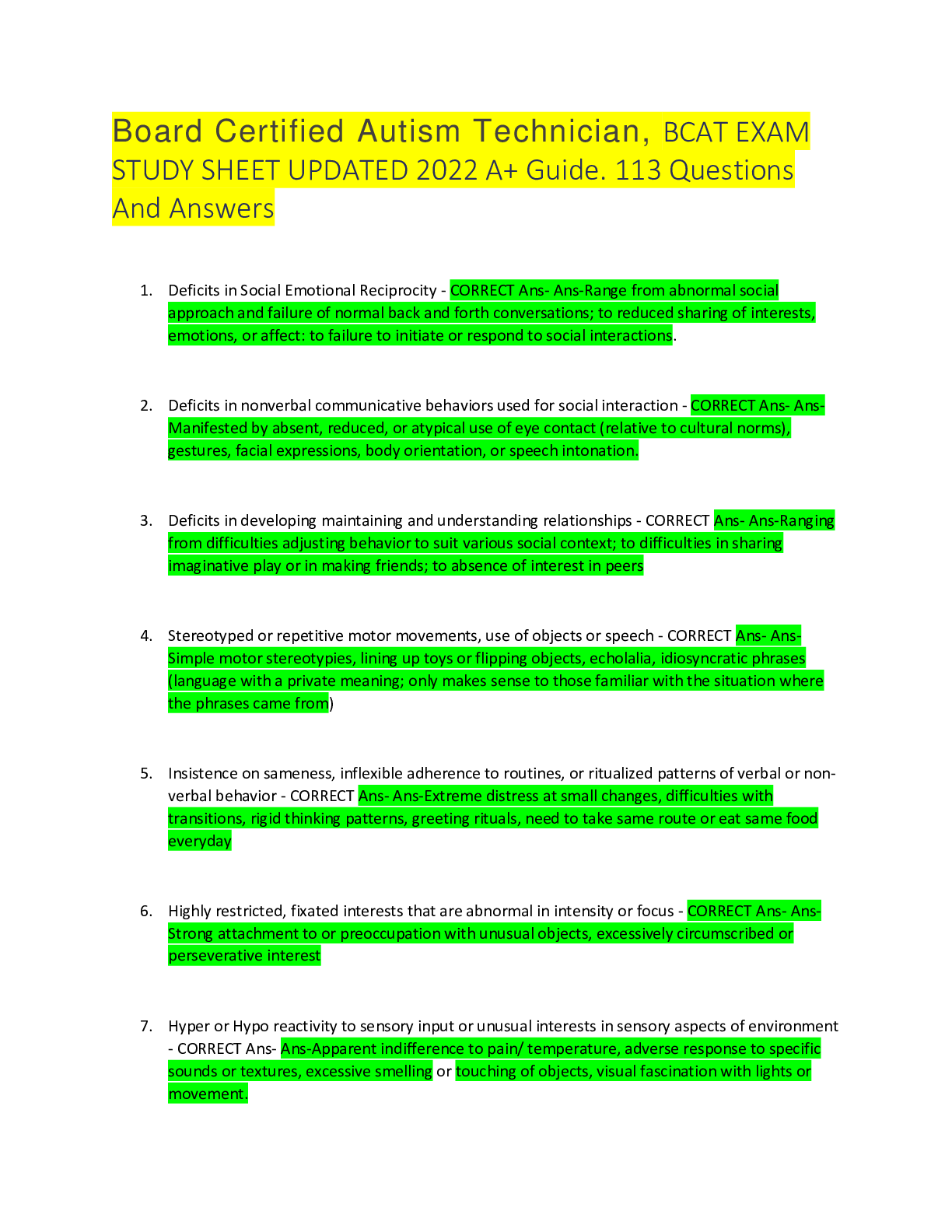
Reviews( 1 )

by Cynt22@60 · 1 year ago
Document information
Connected school, study & course
About the document
Uploaded On
Jun 24, 2022
Number of pages
13
Written in
Additional information
This document has been written for:
Uploaded
Jun 24, 2022
Downloads
1
Views
178



